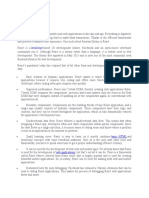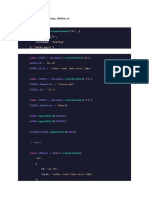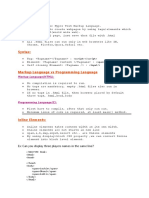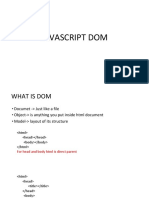0% found this document useful (0 votes)
138 views11 pagesReact JS for Developers
This document provides an introduction to React JS, including:
1. It defines React JS as a JavaScript library for building user interfaces and outlines its main purposes and advantages like reusable components and performance enhancement.
2. It explains why we use React JS, mainly for its improved app speed through use of a virtual DOM and ability to use React on both client and server sides.
3. It covers key React concepts like Redux for state management, Higher Order Components for reusing logic, and includes demos of React projects.
Uploaded by
aashv143Copyright
© © All Rights Reserved
We take content rights seriously. If you suspect this is your content, claim it here.
Available Formats
Download as PDF, TXT or read online on Scribd
0% found this document useful (0 votes)
138 views11 pagesReact JS for Developers
This document provides an introduction to React JS, including:
1. It defines React JS as a JavaScript library for building user interfaces and outlines its main purposes and advantages like reusable components and performance enhancement.
2. It explains why we use React JS, mainly for its improved app speed through use of a virtual DOM and ability to use React on both client and server sides.
3. It covers key React concepts like Redux for state management, Higher Order Components for reusing logic, and includes demos of React projects.
Uploaded by
aashv143Copyright
© © All Rights Reserved
We take content rights seriously. If you suspect this is your content, claim it here.
Available Formats
Download as PDF, TXT or read online on Scribd
/ 11



























































